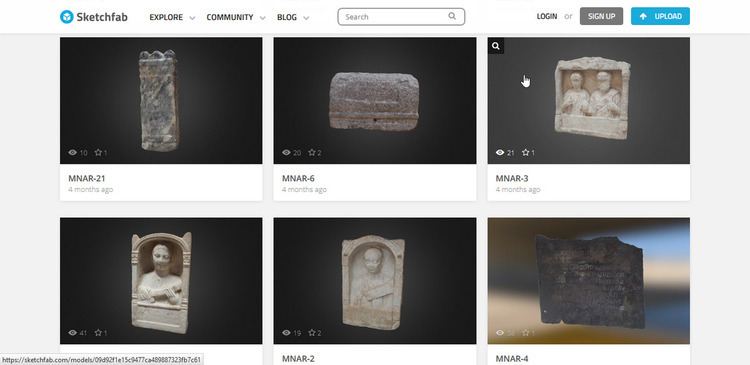Website epigraphia3d.es | ||
 | ||
Museums Museo Arqueológico Nacional.37 inscriptions.Museo Nacional de Arte Romano de Mérida.59 inscriptions. | ||
Epigraphia 3D is a scientific project that consists in 3D modeling inscriptions (mainly Roman). Its scope covers scientific research and teaching epigraphy. It tryes to become more interested on the youngest and the general public.
Contents
It has been developed with funding from the Fundación Española para la Ciencia y la Tecnología (Ministerio de Economía y Competitividad) and Universidad de Las Palmas de Gran Canaria.
History
In 2013, Fundación Española para la Ciencia y la Tecnología (FECYT) funded the project "Descifrando inscripciones romanas en 3D: Ciencia epigráfica virtual" (Decrypting Roman inscriptions in 3D: virtual epigraphic Science). This project was proposed as a multidisciplinary work where participate historians, linguists and engineers. Its objective was to provide "the first collection of Roman inscriptions in 3D, worldwide", making the epigraphy more interesting to the youngest and facilitating its study.
The first phase comprised the collection 37 inscriptions from Museo Arqueológico Nacional (National Archaeological Museum of Spain), of different types (funerary, votive ...) and support (stone, metal, clay ...). It was made a bibliography card for each inscription, with its main data. In 2014 the project was funded again from the FECYT to model a selection of 59 inscriptions from the collection of the Museo Nacional de Arte Romano de Mérida (National Museum of Roman Art in Mérida).
This second phase of the project continues to be developed. Still it is not possible to visualise any of the inscriptions in the official website. However, it can be visualized the inscriptions that already have been modelling in the profile of Sketchfab of Epigraphia 3D.
Project results
At the beginning of 2016, Epigraphia accumulated 97 3D models on Sketchfab, all of the publics and with its respective bibliography card.
The project has a website with information about the own project, galleries with the 3D models and a section with "Resources" created by the researchers with the objective of to introduce the Latin epigraphy to the general public. This divulgative section has:
Besides, it has an interactive map in which they have marked the origin of each one of the 37 pertaining registrations to the collection.
Articles
The project also has originated a serie of publications in differents journals:
